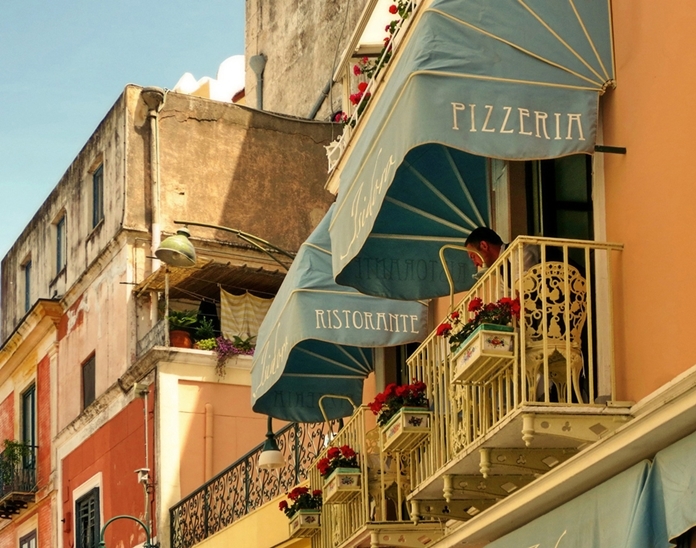
The entrepreneur, restaurateur and author Peter Boizot once wrote, “After one of his rapturously received performances at the Metropolitan Opera in New York, the great tenor Enrico Caruso was asked for his secret. How did he control such power and passion and project such lush sweeps of melody? Looking his questioner straight in the eye, Caruso replied È la pizza, la pizza, caro mio. (“It’s the pizza, the pizza, my dear.”) Caruso was paying unusual tribute to a great national dish of his own country which was not particularly well-known outside Italy at that time – except, as it happened in New York itself, where Italian immigrants had introduced the tradition of the pizza.”
Many years ago in London, I used to visit some of the original Pizza Express restaurants which were founded by Peter Boizot in 1965. One of them was a stone’s throw from the British Museum in a dark, narrow side street that probably hadn’t changed very much since the time of Charles Dickens. On one occasion at the restaurant, an earnest young Spanish waiter informed me that because there were some slices of mushroom on my pizza, I should be drinking white wine with it, not red. This of course was absolute and total nonsense and exuding as much sweetness and charm that I could muster, I told him so.
Wine has always been the traditional accompaniment to pizza. Indeed, in many European countries, wine has always been a staple item at the dinner table partly because it was considerably safer to drink than water. Pizza was sold in the taverns and on the streets of Naples in the sixteenth century, though Peter Boizot hinted at its Neolithic origins when he wrote, “in its simplest form, the pizza…could have been invented by anyone who had learned the secret of mixing flour with water and heating it on a hot stone.”
Pizza has come a long way since then but it remains a simple dish, though it can have countless variations and fascinating flavours. It’s relatively easy to make too. I’ve been making my own for years, though the dough-kneading process can be a bit of a bore. To my mind, simple food needs simple wine. And wine it must be, because pizza cries out for wine. It’s unlikely that people in sixteenth century Naples spent much time discussing the most appropriate wines. They’d simply drink whatever happened to be available locally. And there would have been plenty of choice, because Naples lies in Italy’s Campania region where wine has been produced since the 12th century BC. It’s one of Italy’s most ancient wine regions with a vast number of grape varieties, some of which are found almost nowhere else on earth. Today’s wines from the Campania region tend to be fruit-forward and youthful and many of them would make perfect matches for pizza. However, you’ll probably be hard-pressed to find Campania wine in these parts.
The ideal pizza wine is what the Italians call vino da pasta, which is any inexpensive light table wine knocked back with almost every meal and usually served on the cool side. Yes, I know that some people prefer to drink beer with pizza, but if you must, try to find a strong Italian beer like Nastro Azzuro.
With simple food like pizza, almost any crisp, dry, wine will do. It can be red or white but if it also happens to be Italian, so much the better. Italian wine is made for food. Although some people like hearty wines with pizza, I prefer to drink light-bodied wines regardless of the toppings. My preference would be a Valpolicella or a Bardolino (red) or a crisp dry Frascati or Soave (white). I should stress here that these are merely my wines of preference, not what I actually get to drink. If you like something a little more assertive, basic Chianti would work well with its savoury, herbal hints that come from the Sangiovese grape. There’s no need to choose a white wine just because your pizza has a few bits of chicken on the top. It’s the dominant flavours that count. But if you are having a seafood or vegetarian pizza Sauvignon Blanc or a light, dry rosé would be excellent choices.
The whole business of pairing pizza and wine is pretty basic. Simple food needs simple wine, so save your Bordeaux or Burgundy for a more appropriate occasion. Anyway, they just don’t seem right with Italian food, especially pizza. Richly flavoured pizza works with well with either medium to full bodied Italian reds such as Chianti or Montepulciano and equally well with light bodied reds such as those from Bardolino. If you prefer white, you can’t go far wrong with a decent Frascati. Perhaps in these challenging times, you might finish up, as I so often do, with Mont Clair. But that’s better than nothing, and with a bit of determination and will-power you can almost convince yourself that it’s actually Valpolicella from sunny Italy.
 |
 |
 |





